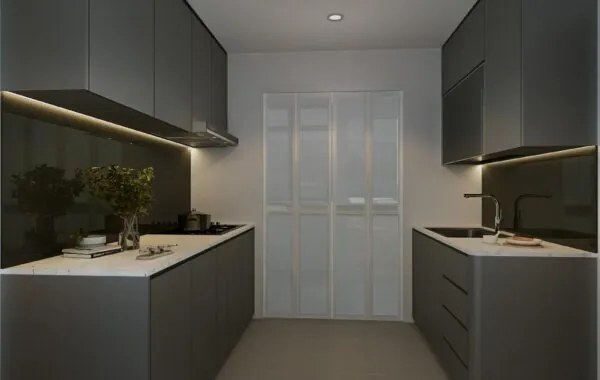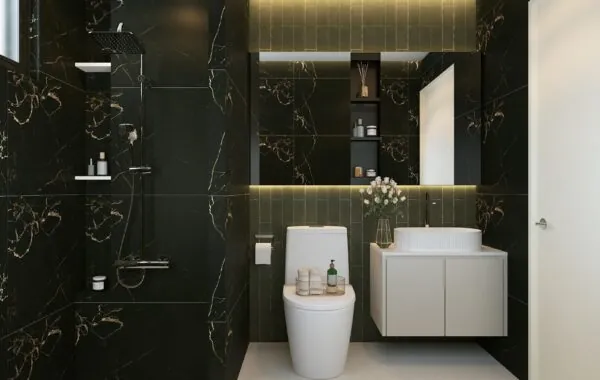When planning an HDB renovation in SIngapore, many homeowners often struggle when deciding between a contractor and an interior designer. Both of these parties offer unique benefits as well as challenges. In this article, we will help you understand and explore the roles, advantages, and disadvantages of both these approaches to find the right fit for you.
Understanding the Role of a Renovation Contractor

A renovation contractor is a professional who is in charge of the physical execution of your renovation project. Tasks that include plumbing, electrical work, tiling, painting, and structural modifications are in their job scope along with all other construction-related tasks. If you are undergoing an HDB renovation, hiring a contractor registered with the Housing & Development board (HDB) is a must to ensure compliance with government regulations.
Renovation contractors typically oversee a team of tradespeople such as an electrician, plumbers and carpenters. Their primary role is to manage the construction side of things and bring your renovation vision to life while following a plan you or an architect or designer has created.
1. Advantages of a Contractor Led Approach
Cost-efficient
Renovation contractors offer a more affordable solution compared to interior designers, especially if you’re purely focussing on structural and practical aspects of your renovation. You won’t be paying for the conceptual designs, saving you a significant amount of money.
Faster Execution
Since there is less time spent on design specifications and intricate design details, contractors focus more on the construction work itself. This makes it easier for them to get the job done faster, allowing you to enjoy your newly renovated home sooner.
Direct Execution
Contractors are very hands-on people and more often than not, you will directly deal with the people responsible for transforming your space. They can carry on their work without the intermediary of a designer, making communication streamlined and direct.
2. Challenges of a Contractor Led-Approach
Limited Design Input
While contractors can handle the physical work of the renovation, they generally don’t offer any other comprehensive design services. You might get advice on materials or finishes, but you’ll need to have a strong idea of what you want in terms of aesthetics.
Less Cohesive Vision
An interior designer helps create a well thought out plan that ties everything together. The contractor may focus on individual tasks, but the cohesive vision may be lacking design and flow of the home and your renovation might not be what you expected.
Risk of Compromise on Design
A contractor led approach might force you to prioritise cost over design. If you’re not careful and don’t remain steadfast in your vision, you might end up compromising on aesthetics to stay within budget.
Understanding the Role of an Interior Designer
1. Benefits of Hiring an Interior Designer
Cohesive Design
Designers create layouts that have the best benefits such as maximised space, select finishes that complement one another and ensure the overall look of your home has a natural flow, feels intentional and harmonious. Having a unified vision for your home is one of the biggest benefits of hiring an interior designer.

Customisation
Interior designers understand your needs, preferences and lifestyle and find the best ways to get them at preferably a reasonable price. They offer personalised design solutions that reflect your personality and daily habits, from custom-built storage to unique colour schemes.
Professional Project Management
Many interior designers also take on the role as project manager, coordinating between different trades and suppliers. This ensures that the renovation stays on track and within budget. They allow homeowners to relax while they handle the logistics.
Added Value
A well-designed renovation can increase the value of your property. Interior designers create spaces that not only look good but are functional and durable, potentially giving you a higher return on investment in the long run.
2. Drawbacks of Hiring an Interior Designer
Higher Costs
Hiring an interior designer does come with a higher price tag. You’re not just paying for labour and materials but also for the design expertise, conceptual plans, and project management services. This can make an interior designer-led renovation significantly more expensive than a contractor-led one.
Longer Timelines
With an emphasis on design and planning, the process can take longer. Interior designers are detail-oriented and may take more time to perfect the plan before the actual renovation work begins. This can extend the timeline of your project.
Less Flexibility
Because interior designers work from a specific vision, it might be harder to make changes once the plan is in place. If you change your mind halfway through the project, it could disrupt the design flow or increase costs.
How to Choose Between a Contractor and an Interior Designer

Now that we’ve covered the pros and cons, let’s take a look at what fits your needs for your home renovation.
Budget
If you have set aside a tight budget, a contractor led renovation may be the more practical choice. You’ll save money by focusing purely on construction rather than design. However, if you’re willing to invest in a more personalised, stylish home, an interior designer may be worth the extra cost.
Project Complexity
If your renovation involves structural changes, such as removing walls or reworking plumbing and electrical systems, you’ll need a contractor. However, if your project is more focused on creating a beautiful and functional space, an interior designer can help bring your vision to life.
Time
If you’re on a tight schedule and want the renovation completed quickly, a contractor-led approach may be better. For those who are willing to wait longer to ensure every design detail is perfect, an interior designer can provide that level of customisation.
Your own design confidence
If you have a strong sense of design and know exactly what you want, a contractor can help you bring that vision to life without the need for a designer. However, if you feel unsure about design decisions or need guidance on how to make the most of your space, an interior designer can offer valuable expertise.
Both contractor-led and interior designer-led approaches have their advantages and disadvantages. Your decision should depend on your budget, the complexity of the project, your timeline, and how confident you are in your design vision. No matter which path you choose, remember to thoroughly research your options, check past work and reviews, and ensure the professionals you hire have the necessary licences and approvals, especially for HDB renovations.
Ultimately, whether you choose a renovation contractor or an interior designer, the goal is the same: creating a home that is functional, beautiful, and tailored to your needs.
Interested? Design Your HDB with Reno Loft today!
HDB renovations are essential for transforming your space into the home of your dreams. If you are looking to build your dream home, then look no further than us!
With 10 years of experience under our belts, our designers are here to realise your dream home.
Start your stress-free renovation journey with Reno Loft today.
Head on to Our Portfolios to browse more of our proud work!



